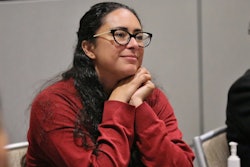The clash between liberal and conservative values in the U.S. has never been more prevalent than it is when manifested in policies to promote higher education.
The Higher Education Act of 1965 was one of the most meaningful pieces of educational legislation produced by Congress in its history.
There are few remnants from our liberal historic past that we value. The Higher Education Act is one of them.
In an era where national and federal educational policies and initiatives are questioned and criticized as burdensome, bureaucratic and overreaching, the federally legislated “Great Society” TRIO programs stand out like a beacon of effectiveness and efficiency and in direct contrast to this supposition.
A successful model that is simply stated and is undergirded by our most precious national value — education — has amassed the largest organized alumni of federal largesse. Despite years of sheepish acknowledgement by federal legislators and lukewarm recognition by the executive branch of government, the TRIO programs remain among the most successful federal initiatives to date.
As a nation, we have yet to mature to the level where we truly believe in the benefits of higher education and are willing to invest in its long-range benefits. We are still mired in the false promises of capitalist trickle-down economic theory and the potential of athletic prowess and entertainment gifts as the rationale for hope and prosperity.
There are some Americans who believe that education is a matter that should be the jurisdiction of the state and that the federal government has no role to play in its policies, programming or funding.















